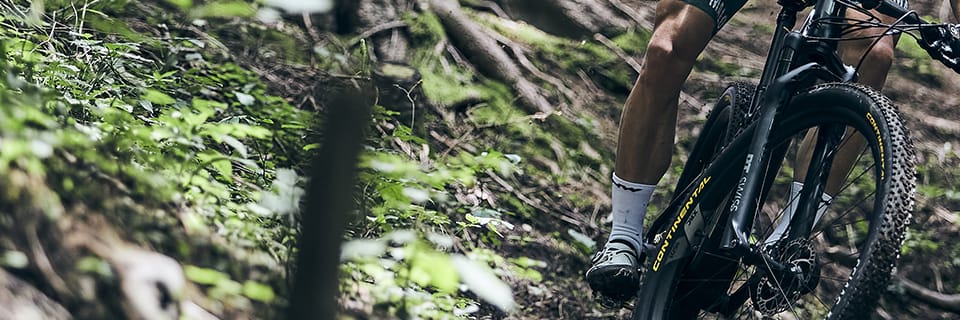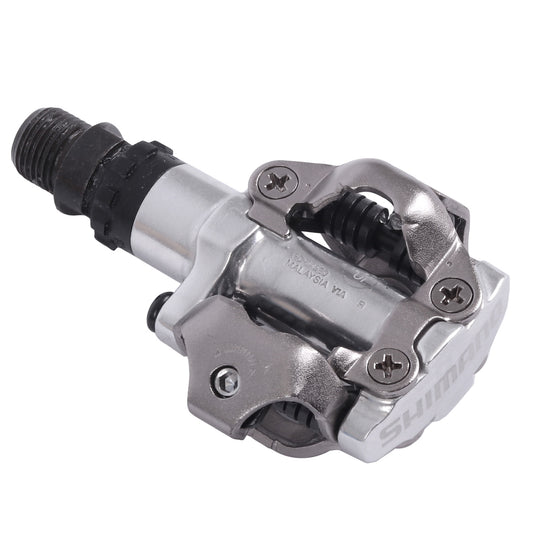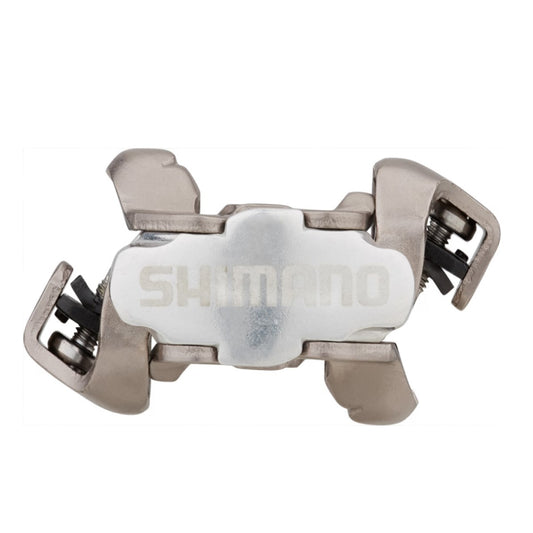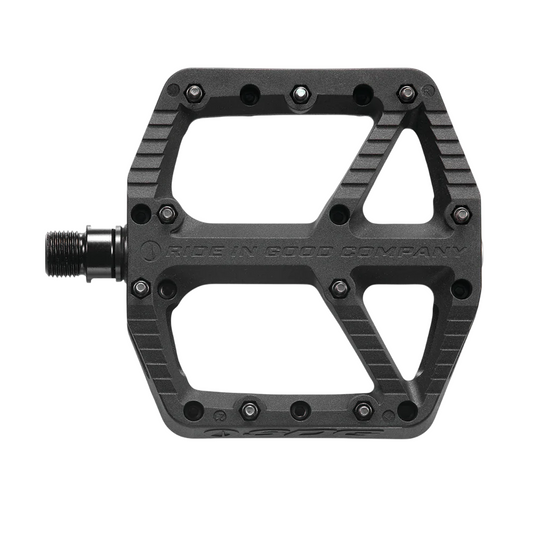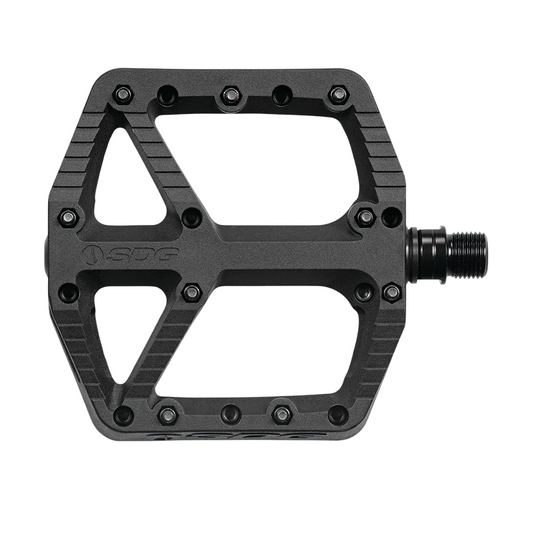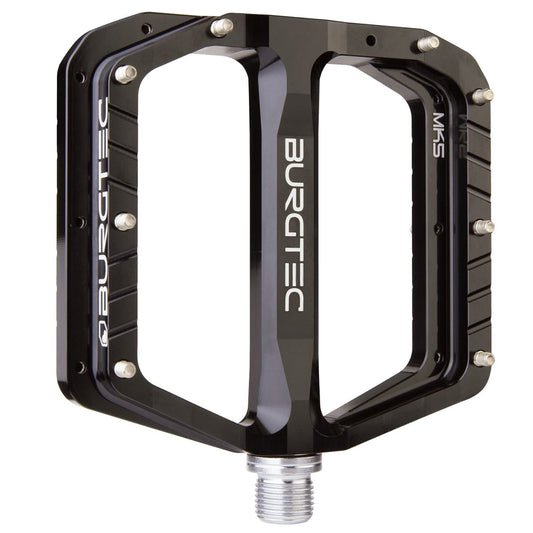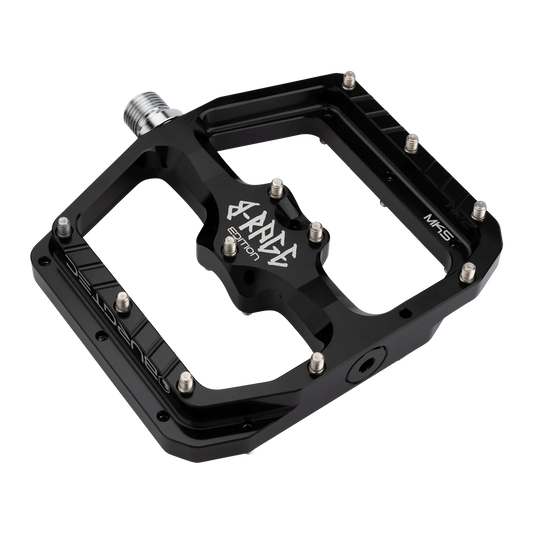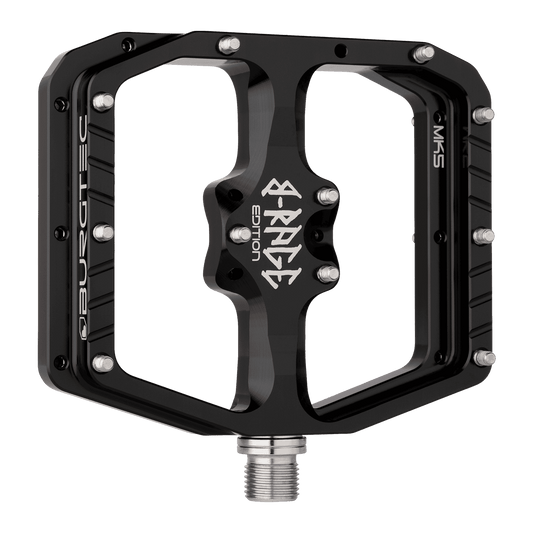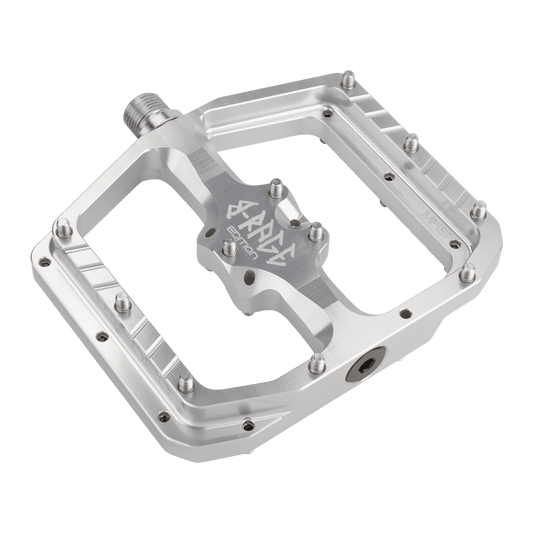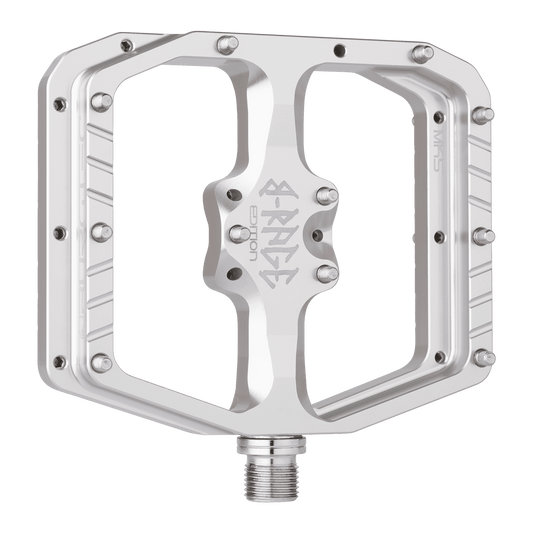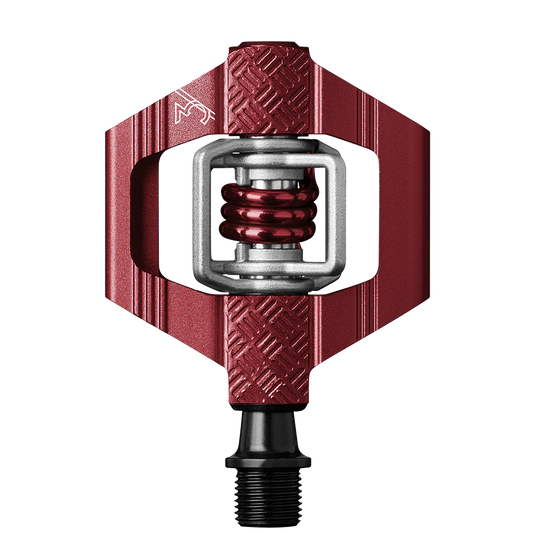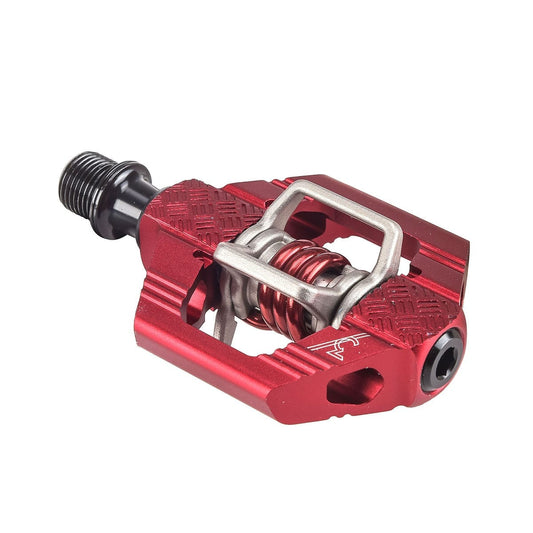Choosing mountain bike pedals is more complicated than it sounds. But don't panic, here's some information to help you avoid getting your pedals mixed up, and select the best possible ones for your riding style.
Standard pedals
- Flat, automatic or mixed pedals
- Pedal axle thread: 9/16" or 1/2".
Pedal types
There are three types of pedal on the market today mountain bike pedals pedals: flat, automatic and mixed.
The flat pedals are the classic pedals, with no foot-holding device, so no special shoes are required. You'll find them with different rolling qualities and varying degrees of grip, depending on the number and type of spikes.
The automatic pedals feature a mechanism that holds the foot on the pedal by means of a cleat fixed to the underside of the shoe. The device automatically releases the foot when it rotates on itself or when too much effort is exerted (a fall, for example). This type of pedal allows you to exert both push and pull forces on the crankset, thus increasing power transmission. Some models are equipped with a platform, known as a cage, which protects the mechanism and enables you to ride unclipped while maintaining a good grip.
The mixed pedalsMixed pedals, as their name suggests, have two sides, one flat and one automatic. This type of pedal is ideal for those who are new to automatic pedals, and those who use their bikes for both sport and everyday use.
When it comes to threading, there's only one standard for mountain bikes, road bikes, city bikes and BMX bikes. The standard thread pitch is 9/16" (14.28 mm diameter). However, on children's bikes, or certain low-end cranksets, you may find a 1/2" (12.7 mm) thread.
Which pedals are right for me?
You're faced with a choice: comfort, safety and ease of use, or performance.
-
Hiking
Flat pedals are generally used for reassurance, but regular riders will prefer automatic pedals for performance. Mixed pedals are a good compromise.
-
Cross-country
You'll need automatic pedals to transmit all the power to the crankset.
-
All-Mountain
There are two schools of thought: those who prefer downhill riding will generally opt for flats; and those looking for a bit of performance will opt for caged automatics, which also offer good protection for the mechanism.
-
Enduro
The hunt for seconds will force you to opt for automatics. Versions with cages are also available to "save the day" in the event of a catastrophe.
-
DH / Freeeride
Flats are the best choice for total freedom of movement.
Découvrez tous nos conseils & Tutoriels
MTB - Pedals
-
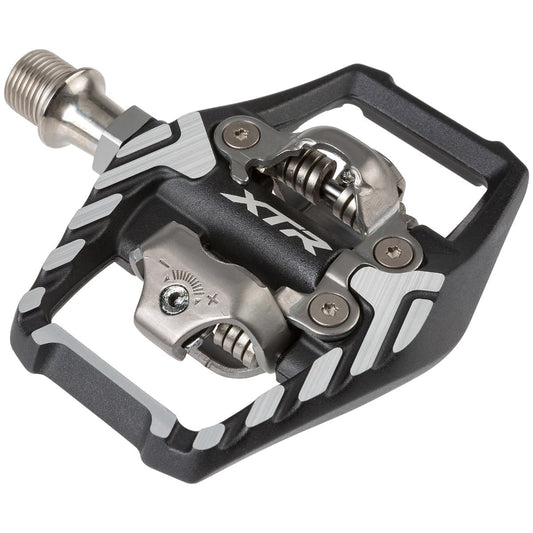
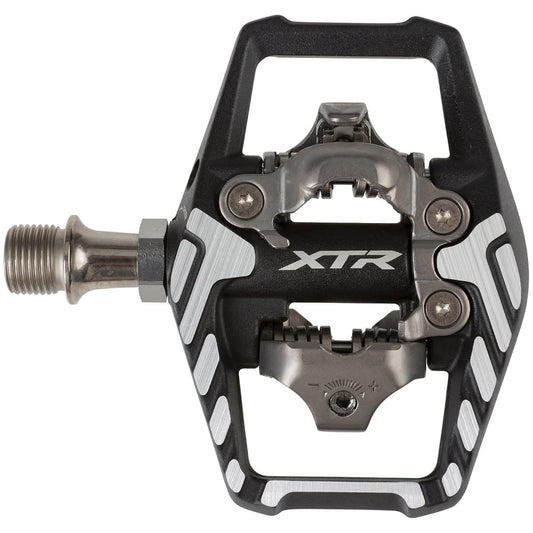
SHIMANO XTR M9120 pedals
Regular price 99,90 €Regular priceUnit price per -
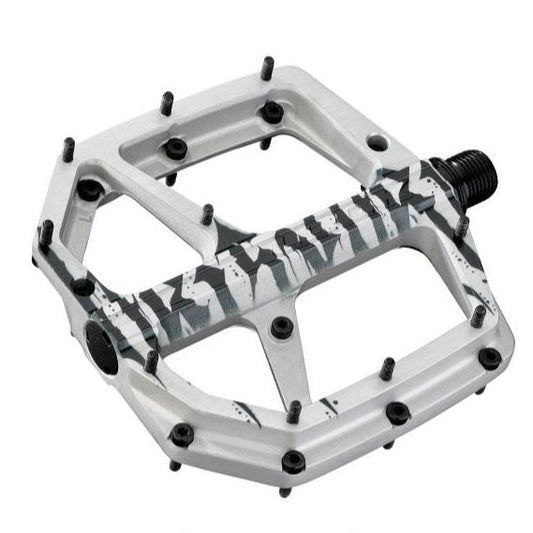
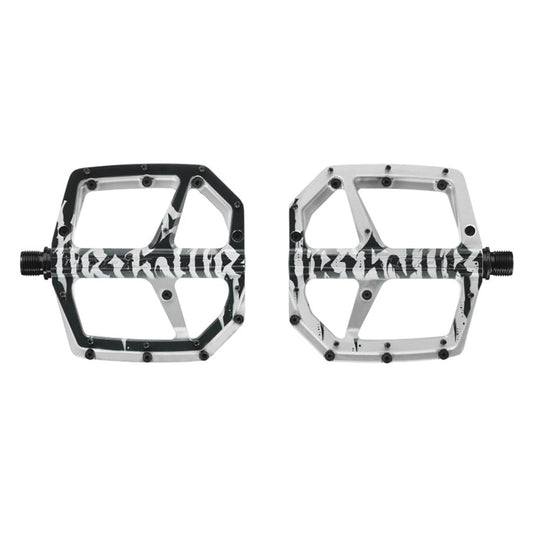
LOOK TRAIL ROC PLUS flat pedals - Kriss Kyle Special Edition
Regular price 139,90 €Regular priceUnit price per
